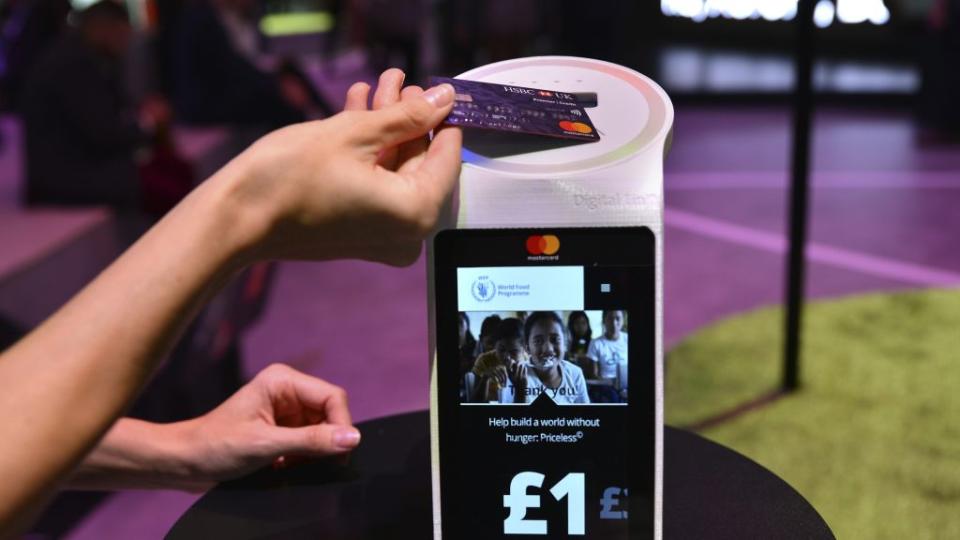Visa and Mastercard are looking to public transit in their quest for world domination

The world’s credit card providers want people to be using contactless payment systems—and they’re hoping public transportation can help kickstart that switch.
Over 150 cities in the world now have public transit systems where customers simply tap their card to travel. Many of these systems, first pioneered in London more than five years ago, have direct or indirect sponsorship from Visa’s so-called “Global Transit Solutions” or Mastercard’s rival ” Transit Solutions.” New York City is in the process of rolling out its own version, which will start with the 4, 5 and 6 Lexington Avenue lines between Grand Central Station and Brooklyn’s Atlantic Avenue station starting May 31, before eventually reaching every corner of the network.
There are a few reasons why Visa and Mastercard are so interested in supporting this change—and why mass transit is a good way to make contactless cards part of the fabric of how people pay for goods and services.
Customers charge 30% more with contactless cards than they do with regular ones, according to a MasterCard study. In the US, according to Visa, 11 out of the top 25 US card issuers are now introducing contactless credit or debit cards. (Discover has not adopted cashless payment, while American Express appears to be making public transit less of a priority than Visa and Mastercard.)
But people who have not used them in the past, or who may have security concerns around cards that use neither a PIN nor a signature for verification, are sometimes slow to make the switch. Here’s where transit comes in.
It’s much faster to use a contactless card to pay than it is to purchase and load up a separate card and swipe it through. During rush hour in a big city, those extra moments might be the difference between missing your train and making it to work on time. Watching dozens of other people bypassing you—tap, tap, tap—is physical proof that it’s easy to do, not too scary, and you probably aren’t going to be defrauded in the process. Once customers are comfortable using contactless cards to pay for public transportation, the theory goes, they’ll then start using it for other purchases, which will eventually rack up.
Because commuters follow the same routine every day, transit is deeply “habit-forming,” Mastercard spokesperson Linda Kirkpatrick told e-commerce news site Pymnts. In turn, it encourages riders to use contactless cards elsewhere.
“The mass transit industry is better positioned than other industries to drive mass adoption of a new payment system,” the Nasreen Quibria of the Federal Reserve Bank of Boston notes, because of its “captive clientele,” who are obliged to use the agency’s preferred payment method.” In turn, these systems “may influence consumer payment use for everyday retail purchases as well.”
There are less significant reasons to support it. After working with the MTA to create and implement the new payment system within New York, Chase and Visa’s slogans are now prominently displayed on marketing material—a good advertising opportunity for these already omnipresent brands. And the international fees on globetrotters using their tap-to-pay cards for transit while vacationing abroad or traveling for business also surely can’t hurt.
More significantly, tap-to-pay cards make it still harder to people to live without using banks, or to make a majority of their transactions using cash alone. While the present Metrocard system, however janky, isn’t going anywhere yet, if most riders use credit and debit cards to pay, there may be less of an incentive to fund it or the maintenance of its machines.
In the US, some 7.7% of people are unbanked, while a further 17.9% are underbanked, or locked out of credit cards and other mainstream financial products. (This may be related to distrusting banks, a poor credit rating, homelessness, or an insecure immigration status.) Innovations such as these may be good news for Visa and Mastercard’s bottom lines, but they make life harder for those for whom cash is a lifeline.
Sign up for the Quartz Daily Brief, our free daily newsletter with the world’s most important and interesting news.
More stories from Quartz:
